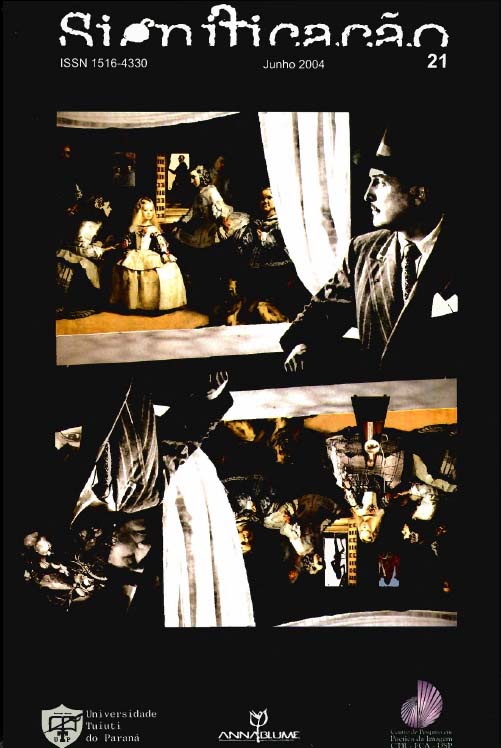O saber do espectador e o saber do telespectador
DOI:
https://doi.org/10.11606/issn.2316-7114.sig.2004.65583Palavras-chave:
Narratologia, Ver, Saber, Televisão, Atentado de 11 de setembro.Resumo
O artigo discute questões básicas de narratologia, a partir de uma crítica a posições defendidas por Gérard Genette, mostrando que tal concepção não se ajusta bem aos textos visuais do cinema e da televisão. Começa por estabelecer uma distinção entre ver e saber, imbricadas nas relações narratológicas, que os teóricos desta disciplina costumam utilizar indiferentemente. Convoca, para ilustrar sua proposta, um exemplo heurístico, o atentado de 11 de setembro perpetrado contra o World Trade Center. Mostra, então, que o ver não pode deixar de prescindir do saber - as imagens do atentado, por si mesmas, não são reconhecidas enquanto o telespectador não consegue estabelecer um laço entre elas e uma dimensão do mundo que, em TV, aparece vinculada ao real ou ao fictício ou ao lúdico. A partir da análise do evento, revela que as imagens só podem ser aceitas como violentas quando perpassam pela somatização humana.
Downloads
Downloads
Publicado
Edição
Seção
Licença
Copyright (c) 2004 François Jost

Este trabalho está licenciado sob uma licença Creative Commons Attribution-NonCommercial 4.0 International License.
Autores que publicam nesta revista concordam com os seguintes termos:- Autores mantém os direitos autorais e concedem à revista o direito de primeira publicação, com o trabalho simultaneamente licenciado sob a Licença Creative Commons Attribution que permite o compartilhamento do trabalho com reconhecimento da autoria e publicação inicial nesta revista para fins não comerciais.
- Autores têm autorização para assumir contratos adicionais separadamente, para distribuição não-exclusiva da versão do trabalho publicada nesta revista (ex.: publicar em repositório institucional ou como capítulo de livro), com reconhecimento de autoria e publicação inicial nesta revista.



















